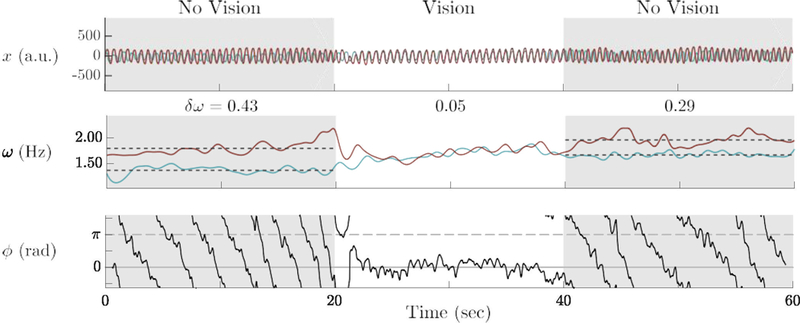Figure 1.

Exemplar trial of a pair’s finger movements: position (x), frequency (ω), and relative phase (φ) over time. Partners had no visual information (and thus no “social contact”) from 0–20 and 40–60 s (shaded background). Partners with different intrinsic frequencies spontaneously phase–locked upon social contact (20–40 s) as seen from the relative phase that was stable near zero. Likewise, thesy matched frequencies as they created a common social pattern (middle plot). Upon cessation of social contact, partners’ frequencies drifted away from the social frequency but did not return to their initial frequencies (40–60 s). Compared to before social contact, partners’ frequencies became more similar afterwards.
